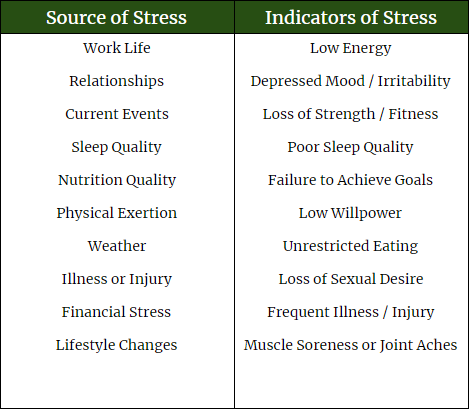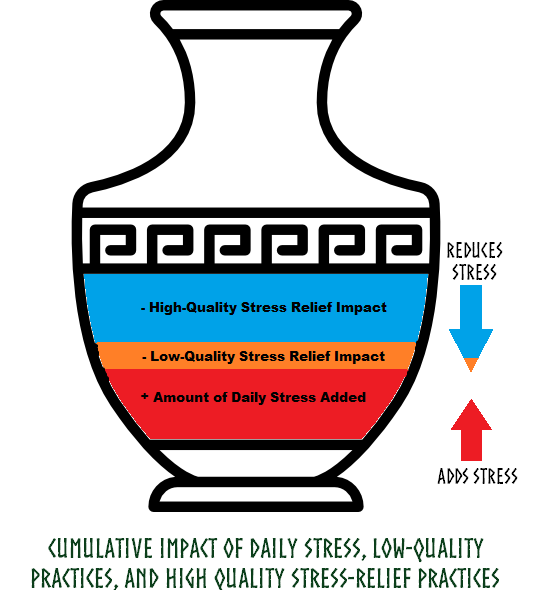Ode on a Grecian Urn Part 1: Ancient Stress-Relief Techniques For a Modern Age
In the West, productivity and work defines us. Our identities are often our professions, and we measure success by financial wealth or climbing the career ladder. One of the first questions we ask a stranger is, “What do you do for work?” As sad as this is, it makes sense when “Americans work 137 more hours per year than Japanese workers, 260 more hours per year than British workers, and 499 more hours per year than French workers.”
In short, many of us are overworked, over stressed, and ignorant of the stress-relieving practices that can truly help us. Our material culture tries to sell us happiness in the form of more stuff. A nicer car, a bigger home, a new electronic gadget, 3000 channels and unlimited streaming in every room of the house! These things — hawked as symbols of success — insidiously add stress to our lives. Planned obsolescence and a “keeping up with the Joneses” advertising epidemic leave us feeling inadequate, burnt out, and broken.
In an age where we can have everything, why are so many of us stressed and unhappy? And more importantly, what can we do about it?
The Stress Urn Analogy
Think of your life as having two urns of liquid: one for stress, and one for willpower. These vessels are linked in such a way that the liquid can flow from one to the other.
As we navigate life, we encounter a wide variety of stressors, such as work (and all that entails, from commuting, to assignments, to co-workers), relationships, current events, sleep quality, physical exertion, and more.
Willpower, on the other hand, is our ability to guide our actions and avoid impulsive behaviors. Willpower helps us identify and set goals, engage in pleasurable activities, and consistently exercise. It represents high energy, a positive mental state, and consistent behaviors that align with our desires and self-image.
On a daily basis, stress and willpower are drawing from one another in an inverse relationship. Unfortunately, we live in a socially dystopian, screen-addicted, overworked, and sedentary society. For most of us, the factors elevating daily stress far outweigh the energy devoted to willpower-boosting practices. It’s time to make a change!
Take Inventory
As they always say, the first step to making a change is admitting your current situation. First, we need to identify how stress is currently affecting us. Look back at the “Indicators of Stress” column, and write down in your journal all the indicators that pertain to you. Add any other indicators of stress that may be specific to your situation (substance abuse, avoiding friends, late night snacking, etc.).
Reflecting on your current lifestyle habits is the first step in making a lasting change.
Next, use the identified indicators to find the most prominent sources of stress in your life. Usually, one source (especially work or sleep) can lead to multiple indicators, but expect to find multiple sources. Single-out one or two sources of stress that you feel confident you can alter, and write down in further detail how and why those sources produce stress. Are these sources of stress a product of habit, or are you powerless to change them?
Finally, think about your daily trends and identify what you are currently doing to relieve stress and unwind. Be honest with yourself, and do not just look for the positive ways you relieve stress (however, you should write these down, too). Below are some of the most common yet low-quality stress-relieving activities we habitually engage in:
By Nikias Painter - Marie-Lan Nguyen (User:Jastrow), 2008-05-02, CC BY 2.5, https://commons.wikimedia.org/w/index.php?curid=4051642
Stress Eating: Stress triggers the release of the hormone cortisol. This hormone was beneficial during our early days when stressful times meant life or death. Cortisol signals the breakdown of muscle to be converted into fuel, increases appetite, and induces cravings for calorically-dense (read: sugary and fatty) foods. This helped us survive challenging times such as harsh winters or wild animal attacks. Today, sugary or rich foods provide temporary feelings of satisfaction and pleasure that help us cope with the stress. With rampant fast-food and sugar-filled grocery aisles, food has become one of the quickest ways to experience fleeting pleasure. Binge-eating, frequent fast-food meals, sugar cravings, and late night snacking are all indicators of stress eating.
Mind-Numbing Screen Activity: An epidemic in our society, a majority of our free-time is now spent either binge-watching television or endlessly scrolling through social media. Just like food, every funny video, catchy headline, or silly meme taps into our pleasure receptors and gives us a brief sense of satisfaction. Every scroll of the thumb is akin to reaching for another Oreo, but the box never runs out. And it doesn’t help that the internet is now being tailored to encourage poor attention spans and fleeting sensations. Rather than taking the time to process our stressful days or engage in restorative activities, we spend hours letting our minds be distracted by feel-good T.V. plots and click-bait. This is passive stress-relief.
Excessive Vigorous Exercise: There is plenty of research out there championing the stress-relief and mood-altering effects of exercise. Done correctly, exercise can provide all the benefits of physical enhancement, as well as boosting mood, improving sleep, and energizing the mind. True to human form, we have taken this advice and run it into the ground. Much of the research advocating for exercise encourages 30-45 minutes of moderate to vigorous activity. Vigorous activity might be circuit training, running, or playing sports. Consistent exercise lasting longer than 30-45 minutes actually reduces testosterone and increases cortisol levels. Consistent high-intensity forms of exercise, such as Crossfit, boot camps, intense running, and even some forms of yoga far surpass the threshold for stress relief, and actually contribute to our stress. We are essentially swapping out our mental stress for physical stress, but not reducing its overall impact.
Sedentary Behavior: AKA being Couch-Locked. This often goes hand in hand with screen activity and excessive physical exertion. We become so stressed out and exhausted that we feel incapable of anything other than vegging out. The thought of doing chores, going for a walk, or hanging out with friends is beyond our energy capabilities. We feel the strong urge to conserve our energy and become sedentary. This is literally a survival strategy, and is a major red flag that your body is not handling the stress of your life.
Low-quality stress-relief activities often “take the edge off” your stressful day and distract you long enough to make it to tomorrow. Think of these practices as removing several drops from your stress urn. By noon the next day, a cup or more of stress is added back into your urn. In no time, the stress is overflowing. Because low-quality practices are largely passive, these techniques do not boost willpower, they only mitigate the bare minimum of your day’s stress.
Upon reflection, identify which sources of stress you can easily minimize or change (indeed, which ones are brought on by your own actions). If watching the news raises your stress level, stop watching it! If a situation at work has been bothering you, talk to someone about it. If you are exhausted and sore after your workouts, cut the intensity in half for a couple weeks and see how you feel.
Next, look over how you are currently relieving stress, and take note of how long you spend engaging in those activities. Is spending 40 minutes scrolling through Facebook the best use of your time? How long have you been sitting in one position, watching television? Are 5 days a week of intense exercise making you feel better than 2 or 3 days? Becoming aware of your habits is a powerful motivator!
I’m starting with the (wo)man in the mirror!
Finally, do these activities truly bring you peace and joy, or do they merely distract you? Are you actively reducing stress in your life, or passively checking out until the next day? While desserts, television, and sedentary rest have their pleasurable value, they should be experienced with intention, and not due to habit.
In Part 2, we will dive into the ancient past to find out how you can swap out these low-quality practices for potent willpower-boosting activities.







